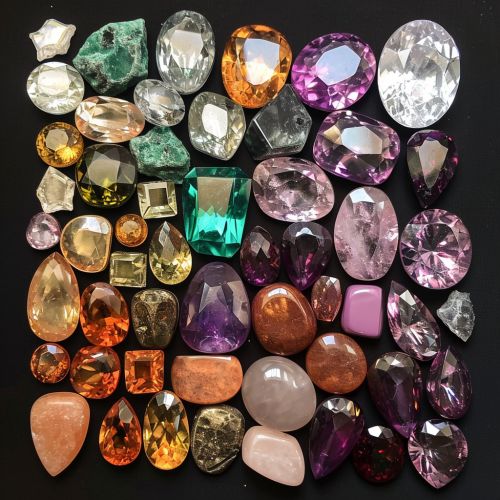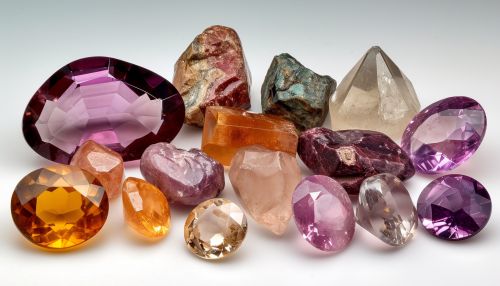Jewels
Introduction
Jewels, also known as gemstones, are pieces of mineral crystal which, in cut and polished form, are used to make jewelry or other adornments. However, certain rocks (such as lapis lazuli, opal, and jade) and occasionally organic materials that are not minerals (such as amber, jet, and pearl) are also used for jewelry and are therefore often considered to be gemstones as well. Most gemstones are hard, but some soft minerals are used in jewelry because of their luster or other physical properties that have aesthetic value. Rarity is another characteristic that lends value to a gemstone.


Classification of Jewels
Jewels can be classified based on several factors such as their chemical composition, crystal structure, presence and type of inclusions, and physical properties. The study of gemstones and their classification is known as gemology.
By Chemical Composition
Gemstones are classified into different groups, species, and varieties. For example, ruby is the red variety of the species corundum, while any other color of corundum is considered sapphire. Emerald (green), aquamarine (blue), bixbite (red), goshenite (colorless), heliodor (yellow), and morganite (pink) are all varieties of the mineral species beryl.
By Crystal Structure
Gemstones can also be classified according to their crystal structure. The crystal structure is the arrangement of atoms in a crystal. It is represented by the lattice, which is a repeating array of atoms. There are seven crystal systems: cubic, hexagonal, tetragonal, orthorhombic, monoclinic, triclinic, and trigonal.
By Inclusions
Inclusions are materials that are trapped inside a mineral during its formation. In gemology, an inclusion is a characteristic enclosed within a gemstone, or reaching its surface from the interior. Depending on the type and severity of the inclusion, they can detract from or enhance the value of a gemstone.
By Physical Properties
Physical properties that make a mineral a gem include color, luster, hardness, cleavage or fracture, and transparency. Other properties can contribute to the gem's value but do not necessarily define a gem, such as optical phenomena (like asterism, chatoyancy), fluorescence, or radioactivity.
Value and Grading of Jewels
The value of a gemstone is determined by a combination of its color, clarity, cut, and carat weight, known as the "Four Cs". This system was developed by the Gemological Institute of America (GIA) in the mid-20th century.
Color
In gemstones that have color, including multi-colored stones, the tone, saturation, and hue can dramatically affect the cost. For many gems, the most desirable color is a pure hue with strong, even saturation.
Clarity
Clarity is a measure of internal defects of a gemstone called inclusions. Inclusions may be crystals of a foreign material or structural imperfections such as tiny cracks, known as feathers, which can appear whitish or cloudy.
Cut
The cut of a gemstone describes the manner in which a gemstone is shaped and polished, from the simplistic cabochon to the highly complex faceted gemstones. The quality of cut is directly related to the overall aesthetic appeal of a gemstone.
Carat Weight
The weight of a gemstone is measured in carats (ct.). The carat, its standard unit of measurement, is divided into 100 points for precision. A gemstone's price increases exponentially with its carat weight.
Famous Jewels
Throughout history, many jewels have become famous, either because of their size, beauty, and rarity, or because of the people who owned or wore them. A list of such jewels includes the Hope Diamond, the Star of India, and the Koh-i-Noor.
